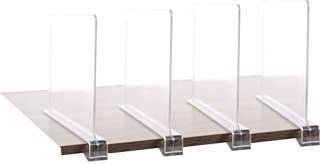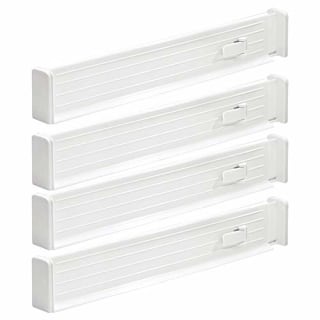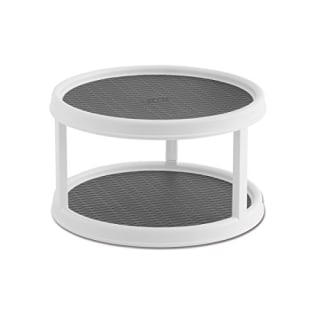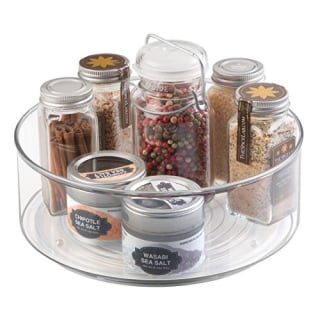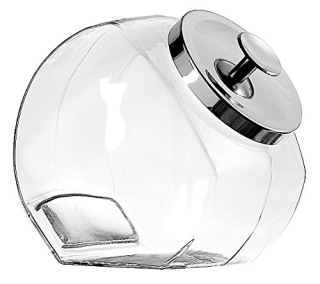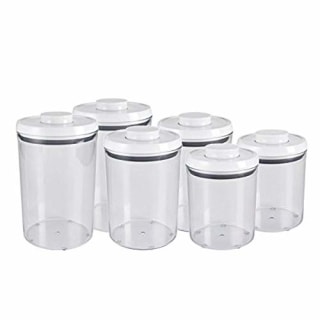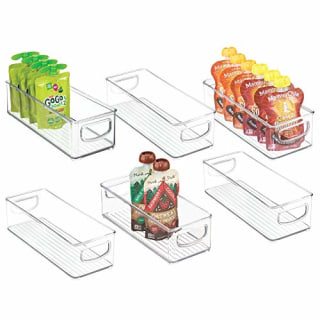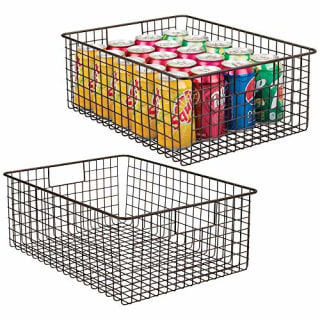Rummaging under the bathroom sink for that pack of razors you know you bought. Ripping apart your pantry in search of an ingredient you need for your recipe. Trying to find that shirt buried in a pile in your closet.
While these situations may be a normal part of your routine, Gilat Tunit, founder of Project Neat, says many people are living in this state of “organized chaos” and it’s a sign that something is amiss.
“If you struggle to find the item you’re looking for in a space that is designated to hold that particular item, you know you’re in trouble. The items you need should be easy to access, without having to rummage or shuffle through other items. If they aren’t, that’s a clear sign that the space is not efficient,” says Tunit. “People don’t understand the value or the need for it because they think their ‘organized chaos’ is just fine! It takes a change in your mindset, and that to me seems to be the biggest hurdle I come across with potential clients.”
Yes, creating organizational systems can take a time and money investment on your part, but Tunit says the return far outweighs the cost: “The value of being organized has no bounds. You literally feel like a weight has been lifted off your shoulders. Your mind suddenly clears, and many clients have immediately felt a sense of calm and peace. Your daily efficiency is drastically improved, because all of your items are at your fingertips, and money is saved because you see what you have and naturally stop overbuying.”
I can attest firsthand to how true this really is. Before Tunit opened up my pantry doors and got to work, I was spending way too much time looking for ingredients, or overbuying since I couldn’t easily see what I already had on hand. And while it did require a few hours of cleaning and organizing and investing money in some bins and containers, the payoff was immediately tangible.
Chances are there are a handful of spaces in your home (at least!) that could use this treatment, so where is the best place to start?
“It can be pricey to organize a larger space such as a kitchen, pantry or bedroom closet,” says Tunit. “However, If I were to choose a space that is the most important to spend money on to start, I would say it’s the kitchen. It’s the heart of your home, and the main space that the entire family gathers. Having clear direction in this space is vital to being organized.”
Ready to get started? Before you start ripping apart cabinets and closets, Tunit warns people not to try and tackle too much at once. “People often try to tackle a very large space without a plan in mind, or sometimes they try to do the entire home all at once, this is going to be impossible and will most definitely end badly,” she says. “When you try to tackle things without a plan, or when you try to handle too much at once, often times it’s very overwhelming and you give up before you can even get going.”
So while it may be tempting to overhaul your entire kitchen, start small. Pick one space: whether it’s the pantry, the refrigerator, or the dreaded junk drawer.
Follow this 3-step process to organize any space
Have your space in mind? It’s time to get organized. “There is no magic trick other than to consistently purge, don’t overbuy, and make sure to contain the space by breaking down your items into zones,” says Tunit. Here’s the simple three-step process you can apply to get the job done:
Purge
The first step is pulling everything out of the space and deciding what will stay and what needs to go. To do this, Gilat mimics the Mari Kondo sentiment: “It’s simple: if you don’t absolutely love it, and don’t use it, let it go.”
In places like the pantry and under sink cabinet in the bathroom, this also means checking expiration dates on food items, cosmetics, and skin and haircare products. She says overbuying is one of the main problems she runs into with clients. All too often, people will say “I don’t have enough space,” but this is a myth, Tunit says. Any space can contain the items you need in an organized fashion; it just requires purging the things that are unnecessary and not overbuying.
Sort
Now that you have the set of items that will go back into the space, it’s time to sort and categorize.
“As you go through the process of emptying out a space, you want to sort the items into categories. The category may change depending on the space that you’re in. For example, in a master bathroom, your categories may be ‘everyday’, ‘nighttime routine’, and ‘stock’, while in a closet it may be more along the lines of ‘long sleeve’, ‘dresses’, ‘pants’, etc.”
In my own pantry, we categorized things first by type of product (i.e. “baking”, “oils and vinegars”, “canned goods”, “grains and pasta”, etc.) And then by frequency of use, giving those items I reached for most often priority on the top shelf, and those things used less frequently (like candy and baking flours) towards the bottom.
Contain
It’s time to go shopping! The type of item or container you use will vary based on the product being contained. Some of Gilat’s most-used items (that make the largest impact) when organizing spaces for her closets are bins, baskets, spinners, drawer dividers, shelf dividers and canisters. “I love MDesign right now, they have a lot of amazing options that I love to use regularly,” says Tunit, who also is a fan of The Container Store and Amazon. Tunit is also recommends adding labels to containers where it makes sese, so that you can quickly identify what items are being housed in bins and basket – especially in places like the pantry and closets, where things may be overhead on higher shelves.
Here are some of her top product picks that will help you organize the spaces in your home.
MORE TRICKS AND TIPS FOR A BETTER HOME
- 7 closet organizers and storage products under $30
- How often to clean (almost) every appliance in your home
- Small home updates you can make right now that will boost your health and happiness
- How to spruce up your home on a budget
Want more tips like these? NBC News BETTER is obsessed with finding easier, healthier and smarter ways to live. Sign up for our newsletter and follow us on Facebook, Twitter and Instagram.


